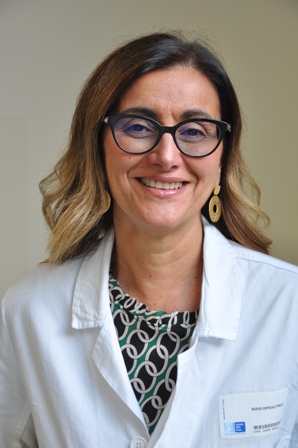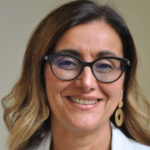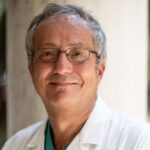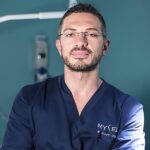Medical doctors and Surgeons
Biganzoli, the patient is the centre of therapy
«Putting the patient at the centre of care means making the patient an actor in the care and treatment process»
A demanding illness like cancer requires unique care, especially when it’s part of a journey quite different from that of other diseases. For this reason, in addition to technological and medical advances, there is a need for a more “human” approach to cancer care. This has been shown to calm patients and increase the chances of recovery; a prime example of this are the Breast Units.
Dr. Laura Biganzoli is a leading figure in the Italian medical landscape. She is currently the director of the complex oncology department at Prato Hospital and the coordinator of the hospital’s breast centre. She explains how the paradigm of cancer care should change.
The patient at the centre of the journey

For the doctor, speaking of a “patient” rather than a “disease” is essential. «I am referring to a person for whom I am responsible not only for the specific treatment of cancer but also for the complexity that cancer and its treatment can generate in the patient’s life, such as symptoms and long-term side effects,» says Biganzoli.
It has been proven that Breast Units, multidisciplinary clinics with various professionals where communication with breast cancer patients is a priority, significantly increase the percentage of women’s recovery while also reducing the chances of relapse. «A multidisciplinary team can provide the patient with everything needed to be supported throughout the diagnostic and therapeutic journey.»
This new paradigm challenges the old school, which prescribed standard oncological treatments for every patient, proposing instead an innovative technique with much more promising results. «Putting the patient at the centre of care means making the patient an actor in the care and treatment process,» she continues.
Innovative research
In the field of research, Biganzoli focuses heavily on the patient-doctor relationship and on simplifying diagnoses and therapies for both young women and older patients. «We are developing the field of personalised treatments,» she explains, «so we are trying to understand how certain drugs can work and be effective under specific conditions, by studying the biology of the tumour.»
In particular, her research group is focusing on liquid biopsies as a less invasive alternative to tissue biopsies. «Specifically, there is a TKA marker that our centre is developing as a possible predictor of response to hormone therapy,» says the doctor, highlighting the advantages of a less invasive and costly biopsy.
Dr. Biganzoli also places particular emphasis on the treatment of metastatic breast cancer, not just the early stages. «The major shift in recent years has been to also focus on this more advanced stage of breast cancer,» Biganzoli explains. «Together with Fatima Cardoso, we have published an initial article on quality indicators for the treatment of metastatic breast cancer,» she says proudly, emphasising the importance of also paying attention to this subgroup of patients.
Future events and studies
Regarding future events, Dr. Biganzoli anticipates: «On October 5th and 6th, we will hold the seventh edition of our course, focused on the treatment of breast cancer in older patients.» This well-established event involves a multidisciplinary contribution from various professionals: oncologists, radiologists, surgeons, and even geriatricians meet to find the best approach to counter the tumour at every stage.
«In geriatric oncology, I have been somewhat of a pioneer: there has been a whole journey on the study of drugs in older patients to try to identify the ideal dosage to use, up to clinical methodology studies and the role of geriatric assessment in care,» the doctor concludes proudly.
Laura Biganzoli’s work represents an important step in holistic care for breast cancer. Her attention to the patient’s overall well-being and her commitment to clinical research herald a new era in the quality of cancer treatment centres.




































